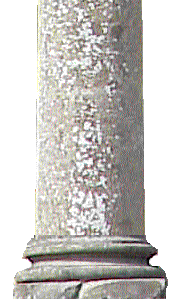|
The parish of Great Witley was a flourishing community in Saxon times. After the Norman Conquest of 1066-1070 the land was granted to Urso d'Abetot, a relative of William the Conqueror. By 1100 the ambitious small baron William de Beauchamp had acquired the Manor, having married Urso's daughter. In 1287 the family of Cooksey had taken it over through their alliance with the Beauchamps, and appointed a parish priest. A Cooksey heiress was married to Sir William Russell of Strensham in 1499, and the Manor remained in Russell hands for over a hundred and fifty years.
During the turbulent times following the Civil War of 1642-1651, the Manor passed out of the hands of land owners and into the possession of industrialists.
In 1655 the existing Jacobean house was bought and enlarged by Thomas Foley, the son of an early Stourbridge ironmaster. During the one hundred and eighty three year occupation of the estate by the Foleys the house and the parkland were extended even further and the present church was built on the site of a medieval church which was demolished. Financial losses eventually forced the Foleys to sell the estate in 1837.
The new owner was William, 11th Baron Ward (who later became the first Earl of Dudley in 1860), however he was not yet of age, and preferred to remain at the family home of Himley Hall near Stourbridge. In 1843 he lent Witley Court to Queen Adelaide, the widow of King William IV. Many of the crowned heads of Europe visited her during her three-year residence. In 1846 at the age of 28, Lord Ward came into his inheritance. Soon he began planning the transformation of Witley Court. He engaged the architect Samuel Daukes, and brought down a sculptor and a wood carver from his Scottish estates, these were James and William Forsyth. Then William Nesfield was employed to lay out an ambitious scheme of gardens, stonework and fountains. Finally, Moxon the royal decorators were hired to refurbish the hundred principal rooms in luxurious Second Empire style. By the time he died as 1st Earl of Dudley in 1885, Lord Ward had created a Palladian palace. His eldest son, the 2nd Earl, was a friend of the Prince of Wales (later King Edward VII). He made Witley Court one of the great fashionable houses of late Victorian and Edwardian times, until its sale in 1920 following the tragic death of his wife, Rachel, by drowning.
The Court with its contents and 800 acres of parkland was bought privately by Sir Herbert Smith. He was a Kiddermister man who had worked his way up from carpet designer to owner and chairman of Carpet Trades. Soon after his purchase of Witley Court he retired and devoted himself to running the property. He introduced electricity and a more economical heating system. He also drastically reduced the number of staff and estate workers, this caused considerable local distress, as did his closure of many long-used local footpaths. The final demise of the house was hastened by a fire in September 1937.
In 1938 the house and land were split into auction lots and sold to demolition contractors and timber merchants. After three hundred years of evolution, the grandeur that was Witley Court fell into ruin and decay.
|





















